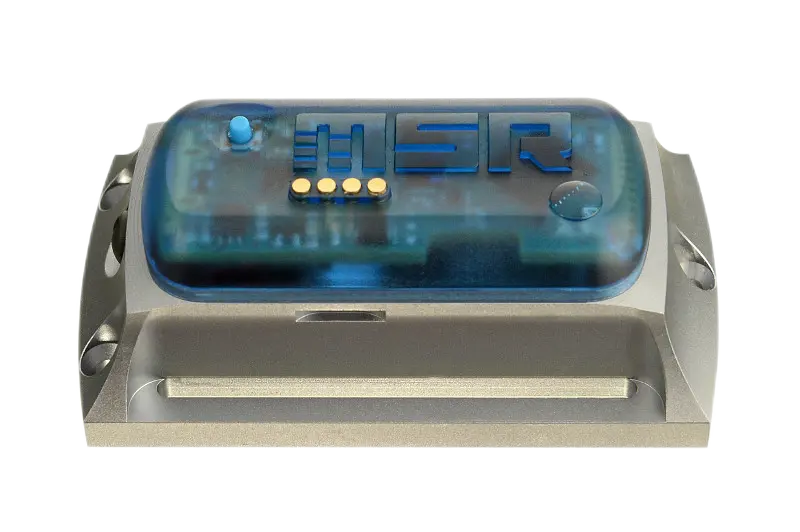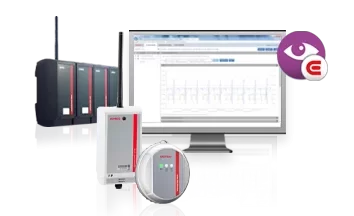
Boosting manufacturing surveillance by Picanet along with CAN XL technology
The escalating elaboration of advanced mechanized systems architectures demands robust observation and diagnostic solutions. Introducing Picanet, a innovative communication protocol tailored distinctly for engineering environments, integrated with the augmented capabilities of CAN XL, introduces a robust solution for concurrent framework supervision. CAN XL's extended data rates and range enable seamless integration with Picanet networks, allowing efficient exchange of essential operational data. This article explores the advantages of introducing Picanet management with CAN XL in industrial automation applications, demonstrating its significance on system productivity.
- In addition, this method enables proactive maintenance by presenting valuable information into system health and imminent issues before they heighten.
- The adjustability of Picanet, alongside CAN XL's extended capabilities, produces it an superior solution for a large-scale spectrum of manufacturing automation operations.
Applying Vuzix Smart Glasses for Remote Observation
Vuzix smart glasses are promptly appearing a flexible means in the domain of remote surveillance. These modern devices allow workers to perceive real-time imagery from separate locations, providing a hands-free and involving position. With their compact design and easy-to-use layout, Vuzix smart glasses enable effective remote monitoring procedures.
- Furthermore, Vuzix smart glasses can be associated with existing surveillance systems, allowing for a flawless workflow.
- The pairing amplifies situational awareness by providing operators with a holistic understanding of the tracked environment.
The multipurpose nature of Vuzix smart glasses prepares them for a comprehensive set of tasks, including inspective duties, operation reviews, and emergency response. As technology continues to flourish, we can project even sophisticated uses for Vuzix smart glasses in the realm of remote surveillance.
Building and Applying CAN Relay Control Networks
This document reviews the configuration and application of a durable CAN-based relay control system. Employing the features of the Controller Area Network (CAN), this system enables real-time communication between a principal controller and scattered relay modules. The design incorporates sophisticated tactics to ensure correct control of the relays, enhancing system performance. Also, this setup showcases the benefits of CAN technology in automotive applications, where dependable control is paramount.
- An system comprises a central controller, relay modules, and a CAN bus.
- CAN offers a combined communication channel for the controller to oversee relay states.
- The software infrastructure is designed to manage interaction between the controller and relay modules.
Realization of this system entails circuitry design, software development, and framework integration. Systematic testing is carried out to prove the functionality and reliability of the system under diverse operating environments.
Observing Relay Conditions Instantly using PCAN Interfaces
Harnessing PCAN interfaces provides a dependable solution for on-the-spot monitoring of relay status within industrial control and control systems. These speedy communication interfaces assist seamless data transfer between PLCs, microcontrollers, and host computers, authorizing constant observation of relay activation states. The ability to track relay behavior in real time gives invaluable insights into system performance, facilitating rapid response to potential issues or malfunctions.
- PCAN interfaces deliver a robust platform for real-time data acquisition from relays.
- Real-time monitoring of relay status enables efficient troubleshooting and maintenance.
- In addition, PCAN interfaces provide high data transfer rates, providing accurate and timely relay status updates.
Improved Visualization Techniques for CAN Bus with Vuzix XR
Exploring the potential of real-time automotive diagnostics and analysis has become continuously crucial in today's connected world. Vuzix XR smart glasses supply an innovative platform for visualizing sophisticated CAN bus data, providing engineers and technicians a hands-free, immersive outlook into vehicle systems. Through advanced rendering techniques, critical parameters such as speed, temperature, and fuel levels are presented in a comprehensible and precise manner, overlaid onto the user's viewing area. This groundbreaking methodology enhances technicians to efficiently identify anomalies, diagnose issues swiftly, and ultimately streamline maintenance procedures.
- The combination of Vuzix XR's augmented reality capabilities with comprehensive CAN bus data connectivity grants a transformative solution for the automotive industry.
- By leveraging up-to-the-minute data streams, engineers can monitor vehicle performance at unmatched accuracy, gaining valuable insights that drives innovation and efficiency.
- The hands-free nature of Vuzix XR empowers technicians to optimally work on vehicles while simultaneously accessing critical information, advancing productivity and safety.
CAN XL-Based Remote Relay Operations
CAN XL's extended data frame length supplies a exceptional platform for distant accessing and controlling relays. This article reviews the methodology of utilizing CAN XL for relay management, demonstrating its pros. By taking advantage of its extended CAN XL functionalities, users can seamlessly monitor and adjust relay states from a single-point location. This approach yields boosted system scalability and decreases the need for physical operations with relays.
- As well, CAN XL's inherent durability ensures stable communication even in rigorous environments.
- For that reason, industries such as mechanical engineering can leverage CAN XL to build more intelligent and automatic systems.
Predictive Relay Maintenance Through CAN XL and AI Algorithms
In the increasingly automated world of industrial operations, guaranteeing the reliability and uptime of essential equipment is paramount. Relay systems, essential components in many automation networks, are prone to wear and tear over time, reasonably leading to failures and costly downtime. To curb these risks, employing predictive maintenance strategies has become required. CAN XL, a high-speed, robust communication protocol, offers a suitable platform for gathering real-time data from relay systems. By capitalizing on the capabilities of Machine Learning algorithms, this data can be investigated to identify patterns and calculate potential failures before they happen.
- Machine Learning models can be trained on historical data from relay systems to build parameters for normal operation.
- Real-time data collected via CAN XL can then be compared against these baselines, permitting the detection of deviations that may indicate impending failures.
- By interpreting this information, predictive maintenance systems can offer alerts to technicians, empowering timely intervention and stopping costly downtime.
Smart Metropolis System Surveillance Utilizing Picanet and CAN XL
Current networked urban environments are gradually reliant on robust and efficient infrastructure monitoring systems. To fulfill this rising need, innovative technologies like Picanet and CAN XL are advancing as effective solutions. Picanet's decentralized architecture facilitates seamless data dissemination across a wide range, while CAN XL offers advanced bandwidth and longer communication ranges. By interlinking these technologies, cities can achieve real-time management of critical infrastructure assets such as traffic flow, energy grids, and environmental sensors. This integrated approach boosts smarter decision-making, refines task execution, and ultimately raises the liveability of urban residents.
Innovative Relay Inspections through Vuzix AR
Vuzix's cutting-edge augmented reality (AR) glasses provide a game-changing approach to industrial relay inspections. By overlaying virtual data onto the real world, technicians can carefully assess relay portions for wear and tear, uncovering potential complications. This wireless inspection method strengthens technician capacity, diminishing downtime and upgrading overall security on the job site.
- Moreover, Vuzix AR platforms allow real-time working together between technicians and consultants, promoting quicker troubleshooting.
- Thus, Vuzix AR simplifies the relay inspection process, resulting in a more dependable and financially beneficial technique.
Comprehensive CAN Analysis to Boost Relay Efficiency
Obtaining optimal element performance within elaborate systems often hinges on comprehensive scrutiny of real-time data. Controller Area Network (CAN) provides a reliable platform for harvesting this critical information, enabling in-depth insights into relay behavior and system condition. By capitalizing on real-time CAN data analysis, engineers can pinpoint potential issues, enhance relay settings for top-level efficiency, and ultimately boost the overall reliability and performance of the system.
- Real-time CAN data analysis furnishes a valuable tool for identifying fluctuations in relay behavior.
- Deploying real-time monitoring systems can significantly enhance system maintenance.
- By analyzing CAN data, engineers can calculate relay performance metrics such as turnaround time.
Enhanced Network Security for Relay Controls
Relay control networks utilize secure communication protocols to maintain the integrity and confidentiality of transmitted data. These protocols facilitate reliable transmission between relay nodes and central controllers, protecting from unauthorized access, interference, and eavesdropping. Deploying robust protocols such as IPSec is crucial for maintaining the security and reliability of these networks. This ensures efficient and safe operation in critical applications reaching industrial automation to smart grids.
redis數據庫